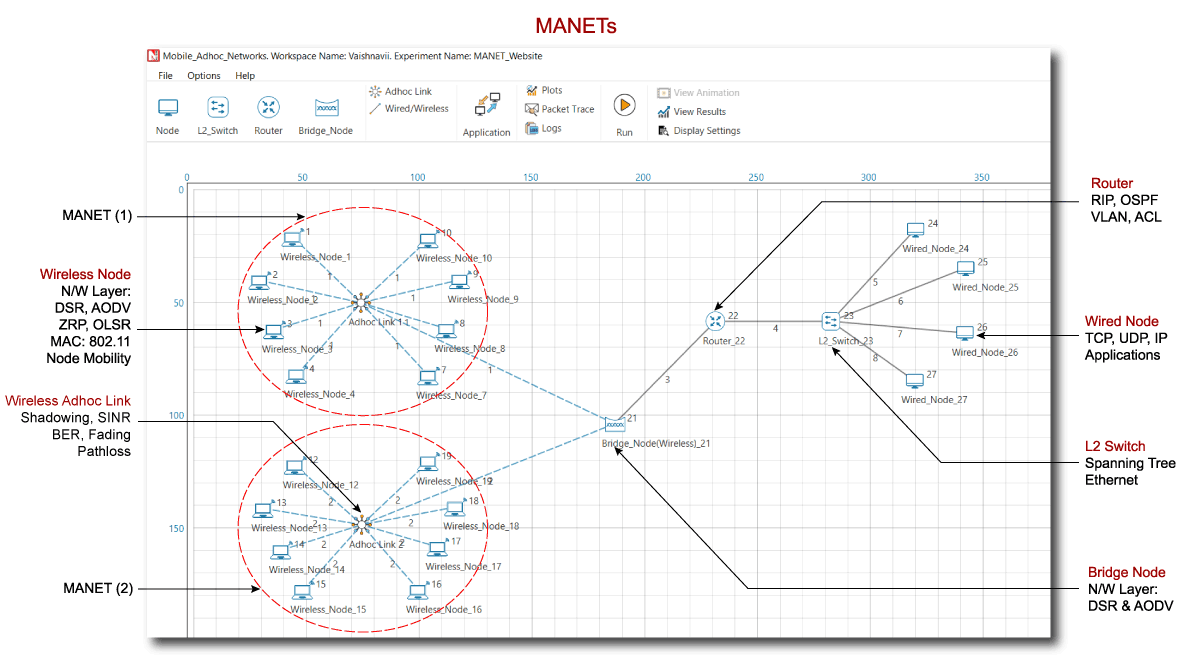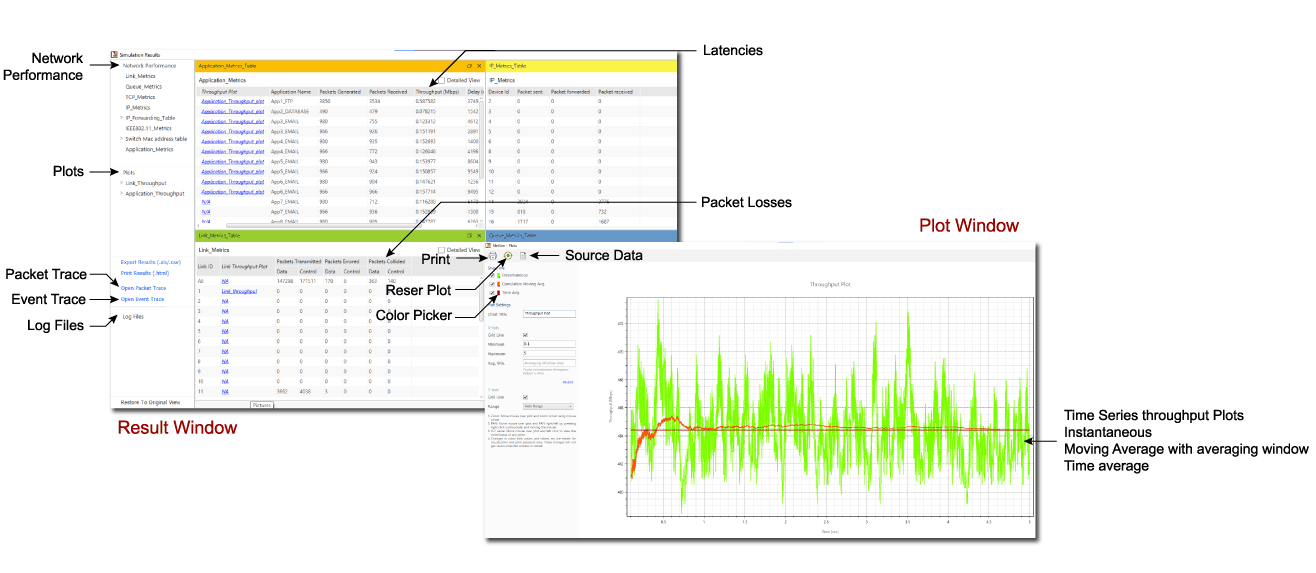Mobile Adhoc Network (MANET)
Overview:
NetSim's MANETs networks library enables users to design, simulate and analyze the performance of mobile ad hoc networks. Check here for information on MANET Military Radios.

Features
- Architecture & Integration
- NetSim component 4 is MANETs
- Interfaces with NetSim Component 6 (IoT) module
- Interfaces with NetSim Component 9 (VANETs) module
- Interfaces with Add-on TDMA Radio Networks (Military Radios)
- Interfaces with Add-on NetSim Emulator
- Network Stack
- Entire 5-layer TCP/IP network stack is modelled in each device
- L5 - Application Layer
- All standard NetSim applications like voice, video, FTP, e-mail etc.
- L4 - Transport Layer
- Supports both UDP and TCP protocols.
- L3 - Network Layer
- User configurable static routing
- Dynamic Source Routing (DSR)
- Ad hoc On demand Distance Vector Routing (AODV)
- Optimized Link state Routing (OLSR): Neighbor discovery, MPR selection, and Topology control
- Zone Routing Protocol (ZRP)
- L2 - MAC Layer
- Wi-Fi, TDMA (for Military Radios)
- L1 - PHY Layer
- Path Loss Models
- Range Based Reachability
- Friis Free Space
- Log Distance
- COST231 HATA Suburban, COST231 HATA Urban
- HATA Urban, HATA Suburban
- Indoor Office, Indoor Factory, Indoor Home
- Fading Models
- Rayleigh
- Nakagami
- Shadowing Models
- Log Normal
- Constant
- Mobility
- Random walk
- Random way point
- Group mobility
- Pedestrian mobility
- File based mobility
- Energy model
- Transmit
- Receive
- Idle
- Sleep
- Energy harvesting

Statistics Overview
- NetSim provides detailed summary statistics that cover various metrics
- Throughput
- Delay
- Errors
- Data and control packet information
- Forwarding tables
Both at the link level and on a per-application basis.
- Trace and logs
- Packet trace records details like packet ID, source, destination, arrival time, payload, overheads etc.
- Radio measurements log that records Tx-Rx Distance, Tx Power, Pathloss, Rx Power, SNR, SINR and BER for each transmission
- Source Code Accessibility
- Protocol source C codes are provided.
- Users can adapt the underlying codes using the MS Visual Studio development environment for specific requirements or enhancements.
- Integration Capabilities
- NetSim supports socket-based external interfacing to MATLAB, allowing users to expand their simulation and analysis capabilities.
- Simulation of cyber attacks and countermeasures
- Sinkhole attack
- Secure AODV
- Intrusion detection system